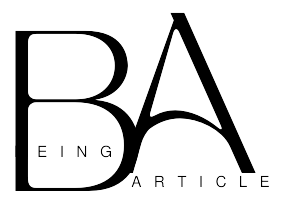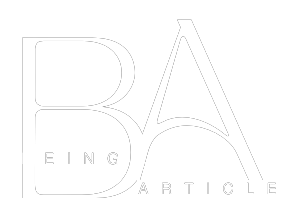How To Say Learn In Sign Language?
To say “learn” in American Sign Language (ASL), you can use the sign for “know” and combine it with the sign for “study.” To sign “know,” you form an “O” shape with your dominant hand, touch your forehead, and then bring your hand down to your chest. To sign “study,” you make the same “O” shape with your non-dominant hand and place it in front of your chest, then make a brushing motion with your dominant hand over the top of the other hand. So to sign “learn,” you would first sign “know” and then “study” in succession, indicating the process of acquiring knowledge through study or practice.
Sign language is a great way to express yourself. It also helps you communicate with people who are deaf and hard of hearing.
Although signing is mainly about hand gestures, it’s also important to learn facial expressions. Learning facial expressions will help you convey more information.
Signs For Learning
Sign language is a great way to learn about another culture or simply communicate with people who are deaf or hard of hearing. It can also help you feel more connected and comfortable with your friends, family members, or coworkers.
If you want to learn how to say in sign language, the first step is to find a good book or dictionary with clear pictures and descriptions of signs. You can also try taking a class from a local deaf instructor to improve your skills and gain more confidence in signing.
There are many different ways to learn American Sign Language (ASL). Still, the most common is to hold up your non-dominant palm flat and horizontally with your fingers wiggled forward on your dominant hand as it moves back and forth in front of it. This wiggle can be interpreted as looking at something carefully and studying it.
A good way to teach children how to say learn is to use a variety of activities, such as having students design signs for things they would like to do at school or home. They can also make signs telling the class what to do or design an obstacle course using simple words and pictures.
This activity is an excellent way to learn how to say learn in ASL, and it can be used with children of all ages and abilities. The best part is that children can practice their new sign at home or with friends, making it even more fun!
In addition to learning how to sign learn, the next step is to teach your child some basic etiquette for communicating in sign language. This will help them become more comfortable with the process and ensure they are not embarrassed by any mistakes in their signing.
It is also important to remember that there are many different styles of sign language, just like spoken languages. What one person may sign with a partner or a group of friends could be completely different from what the same person would do with another person.
You can also check out some of the most popular YouTube channels for learning to sign. ASL Meredith is a great resource for beginners, with many informative videos on various topics.
Marlee Signs is a free app that teaches you how to say learn in American Sign Language and has been voted #19 on the Apple App Store’s “Top Free Education Apps.” It features an award-winning Deaf actress, and it is specifically targeted toward deaf and hard-of-hearing users. Despite minor bugs and errors, Marlee Signs is an easy-to-use tool for signing and teaching American Sign Language.
Signs For Teaching
Sign language is an easy and effective way to communicate with babies. It’s also a great way for them to learn to use their hands.
The most important thing to remember is that you should try to practice signing with your baby as often as possible. This will help them learn the signs correctly and quickly.
Teaching babies sign is a wonderful way to build communication and bond with them. It can also be a fun way for them to learn new words related to their world.
You can start by learning some of the most common baby signs. Some of the most popular include all done, milk, and more.
All done is the perfect first sign because it’s simple to perform and shows that your baby’s hands are empty. This is especially helpful if you’re feeding your baby, and it also helps them understand the concept of being full or empty.
For more advanced babies, you can begin to teach them some of the more complicated signs. For example, you can teach them the hurt sign by clenching both hands into fists and extending your fingers. You can also teach them the; please sign by rubbing their palms on their chest.
Another important sign is the “pick me up” sign. This is a very popular sign among caregivers because it’s easy to remember and reinforces the child positively.
To perform the pick me up sign, bring your non-dominant hand up about belly height and then reach into the palm of the first hand. You can also wiggle your dominant hand in front of the non-dominant one.
In addition to learning the manual alphabet, numbers 1 through 10, and important expressions and questions, it’s important to learn Deaf etiquette. You can do this by attending classes taught by a deaf instructor or taking an online class from a Deaf teacher.
You can also use a dictionary or an online dictionary to learn the correct signs for words. This will help your baby learn and retain the vocabulary they need for American Sign Language (ASL).
When teaching a baby how to sign, selecting signs related to their world is best. This will help them connect the signs to their everyday life and will make it easier for them to learn them.
There are many books you can buy on infant and toddler sign language and many websites that offer free instruction. Researchers who published groundbreaking studies on infant and toddler sign language compiled some of the most popular books.
If you don’t have access to a book or website on infant and toddler sign language, many apps can help you learn sign language basics. These apps are a great way to begin learning at your own pace, and you can even find some free of charge.
For example, the app Marlee Signs is a great place to start learning. Voted #19 on the Apple App Store’s “Top Free Education Apps,” this app offers instruction for beginners and has an on-screen guide that makes it easy to follow. This app also has an interactive search function that allows you to look up words by typing them in.
Advantages Of Sign Language

If you’re deaf or hard of hearing, sign language is an important way to communicate. It’s also helpful for people who struggle with the spoken word, like those with autism or aphasia.
There are several advantages to learning sign language, including improved communication, increased vocabulary, and better social skills. So what are you waiting for?
The sign language can be described as a visually-based language that relies on a mix of facial expressions and body language communicate. It is utilized by those who are hard of hearing or deaf. hearing and also by those who are able to hear but struggle with speaking. While it’s not as well-known as other traditional languages, it offers many advantages. Here, we’ll examine some of the benefits of the sign language.
Advantages of Sign Language
1. It Provides a Means of Communication for the Deaf Community
The most notable benefit for sign languages is the fact that they is an avenue for communication to the deaf community. Without the sign language, those with hearing loss or hard of hearing would be left with no way to communicate with other people. Sign language lets them communicate with others as well as share their thoughts and even communicate with others around them.
2. It Is a Language in Its Own Right
Sign language isn’t just an assortment of gestures or hand gestures. It is a language in its very own distinct way, with its own distinct syntax, grammar and vocabulary. Therefore, it is as complicated and complex as any other spoken language. In recognizing the signs as a legitimate language, we’re promoting inclusion and showing respect to people who are deaf.
3. It Enhances Cognitive Development
Sign language learning has been proven to boost the cognitive development of children. It is a requirement for both parts of the brain. This can aid in improving memory, problem-solving capabilities and spatial reasoning skills. Research has also proven that children who begin learning signs from a young age could be able to improve their reading and language abilities later in life.
4. It Can Improve Communication in Noisy Environments
In noisy settings such as restaurants with a lot of people or concerts that are loud it is often difficult to understand and hear spoken languages. Sign language can be used as a means to communicate without the need to use audio. Through the use of signs in these situations it allows people to communicate better and avoid miscommunications.
5. It Can Be Used for Covert Communication
In cases where communication verbally is not feasible or desired the use of sign language may be used to conceal communication. This is especially useful in cases where confidentiality is essential for example, in military operations or business negotiations.
6. It Can Be Used as a Second Language
If you are proficient in one spoken language, learning sign language can be an excellent second language. This can be especially beneficial for those working in areas such as education, healthcare or social work where they might meet hard of hearing or deaf hearing people regularly.
7. It Promotes Inclusivity and Diversity
By acknowledging and taking the initiative to learn the sign language, we promote inclusion and diversity. We show respect for the deaf community, and acknowledge the existence of various methods of communication. This will help eliminate barriers and build an environment that is more inclusive.
FAQ’s
How do you say “learn” in American Sign Language (ASL)?
In ASL, the sign for “learn” involves tapping your forehead with the index finger of your dominant hand twice. This represents the idea of knowledge entering your brain and being absorbed.
How do you say “learn” in British Sign Language (BSL)?
In BSL, the sign for “learn” involves using both hands to make a “V” shape, with the fingertips touching. The hands are then moved towards each other and back out again, as if grasping and then releasing knowledge.
How do you say “learn” in Australian Sign Language (Auslan)?
In Auslan, the sign for “learn” involves using your dominant hand to make a “Y” shape with your fingers, and then moving your hand upwards and outwards. This represents the idea of knowledge spreading and growing.
How do you say “learn” in International Sign Language (ISL)?
In ISL, the sign for “learn” involves using your dominant hand to make a fist, and then moving it towards your forehead and away again. This represents the idea of knowledge entering and being stored in your brain.
Is the sign for “learn” the same in all sign languages?
No, sign languages vary from country to country and even from region to region. The signs used to represent concepts like “learn” can differ based on cultural and linguistic influences.
Are there other signs related to learning in sign languages?
Yes, there are many signs related to learning in sign languages. For example, there may be signs for “study,” “read,” “write,” “teach,” “understand,” and more. Each sign language has its own unique vocabulary related to education and learning.



















